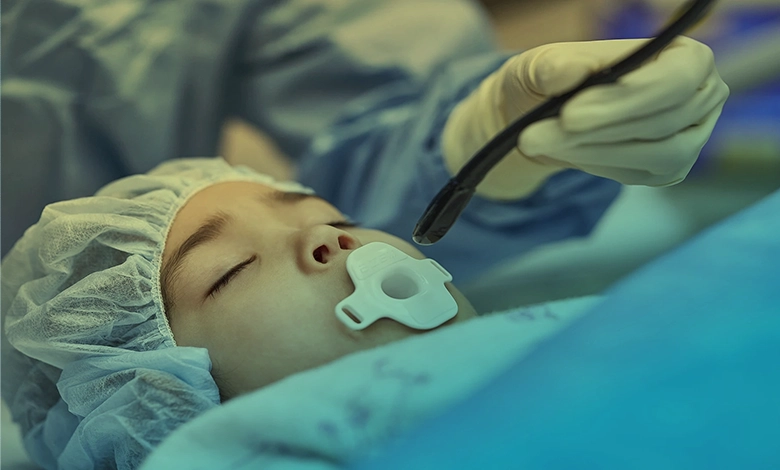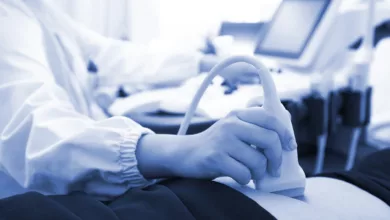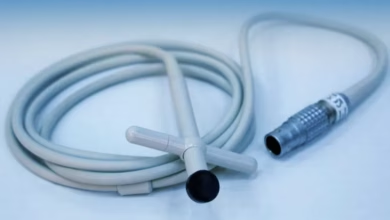What Is a TEE Transducer?
Among different types of ultrasound transducers, Transesophageal Echocardiography (TEE) transducers are designed explicitly for heart diagnostics. In this blog, we’ll explore the critical features of TEE probes, their role in medical imaging, and more!
An Introduction to Transesophageal Echocardiography (TEE) Probes
TEE stands for Transesophageal Echocardiography. TEE transducers are specialized devices designed to produce detailed images of the heart. Unlike other types of ultrasound probes, such as linear or convex transducers that are used externally, TEE is considered an invasive procedure because the transducer is inserted into the patient’s body.
How Do TEE Transducers Work?
To examine the heart, doctors use invasive and non-invasive methods. Among the non-invasive options, TTE is commonly used, where the transducer or probe is placed on the chest externally. This placement allows doctors to visualize the heart’s structure and function in real-time using ultrasound.
In contrast, TEE offers another approach (Invasive), where the probe is inserted into the esophagus through the mouth. Because the esophagus is close to the heart, it provides a clearer image, avoiding interference from ribs or lungs.
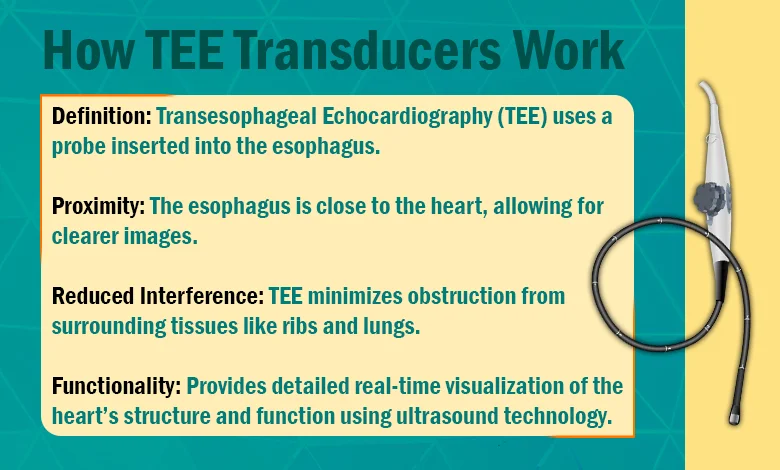
Here is a Brief of how the TEE procedure is done:
- First, when you visit for a TEE test, your provider will place electrodes (small stickers) on your chest to monitor your heart’s performance during the procedure.
- Before placing the TEE transducer into your esophagus, your throat should be numbed by gargling a special solution.
- Next, your provider will gently insert an endoscope, a long, thin, flexible tube, into your mouth.
- Once the TEE probe is positioned in your esophagus, capturing images of your heart will begin, which takes about 15 minutes.
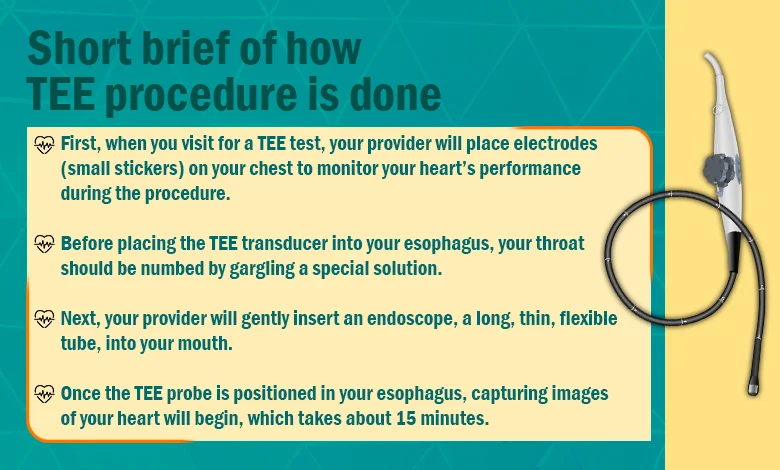
What Are the Benefits of TEE Transducers?
Although the Transesophageal Echocardiography (TEE) transducer is considered an invasive method for capturing heart images, and the TTE approach is often used for routine imaging, TEE offers key advantages in certain situations that make it unique compared to other methods.
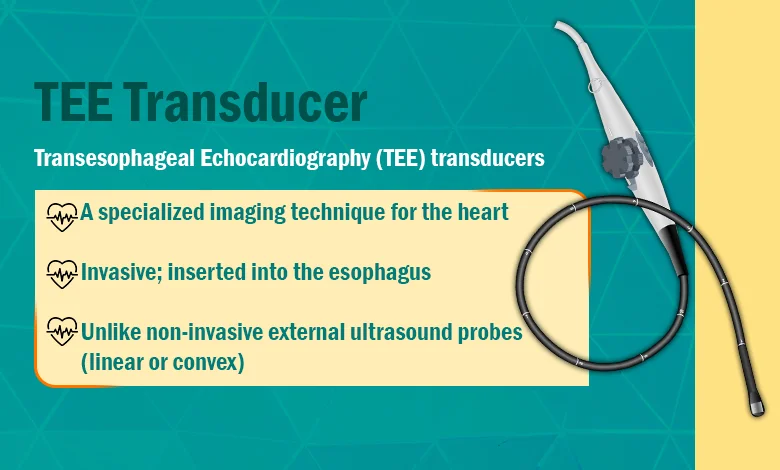
1- Delivering More Detailed Images
TEE transducers are placed into the esophagus, which is located directly behind the heart. This option offers a more detailed image and provides a much closer view of heart structures than other echocardiography methods, such as TTE.
2- Providing Better Visualization of Complex Structure
In certain critical cases, like suspected endocarditis (infection of the heart valves), detailed images of specific heart structures are required, which TTE transducers may not adequately provide. TEE transducers play an important role by positioning the ultrasound probe closer to the heart via the esophagus.
3- Providing Real-Time Imaging During Surgery and Procedures
Another key benefit of TEE probes is enabling doctors to see details like heart valve motion, blood flow, and possible abnormalities during surgery.
4- Advanced Features
Last but not least, some Transesophageal Echocardiography (TEE) probes feature Doppler capabilities, which are used to measure the speed and direction of blood flow through the heart.
What Are the Medical Applications of TEE Probes?
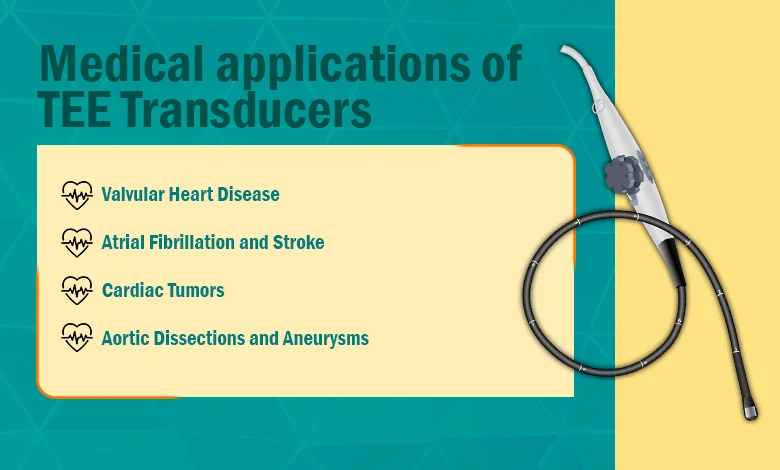
So far, we have discussed the importance of TEE transducers in today’s technology and highlighted their key characteristics. Now, here are four critical use cases and applications of TEE probes in medical imaging:
1- Valvular Heart Disease
One important use case of TEE probes is to detect infections of heart valves, known as endocarditis. These probes are commonly used when other methods, like transthoracic echocardiography (TTE), cannot detect vegetation, abscesses, or other abnormalities.
2- Atrial Fibrillation and Stroke
Another medical application of TEE transducers is to diagnose clots in the left atrial appendage in patients with atrial fibrillation, as well as patients who have experienced a stroke or transient ischemic attack (TIA).
3- Cardiac Tumors
Transesophageal Echocardiography (TEE) can be used when tumors or other masses within the heart, such as myxomas, may not be adequately detected by TTE probes.
4- Aortic Dissections and Aneurysms
One crucial medical application of TEE transducers is identifying the thoracic aorta and aortic dissections or aneurysms that might be missed during the TTE methods.
What Are the Top Brands of Transesophageal Echocardiography (TEE) Probes?
Here is a list of some of the most well-known and top brands of TEE Probes used in medical imaging:
- GE: Some popular GE brand TEE transducers are GE 6Tc-RS and GE 9T.
- Philips: Some popular Philips brand TEE transducers are Philips X7-2t and Philips S7-3t.
- Siemens: Some popular Siemens brand TEE transducers are Siemens Z6Ms and Siemens V5Ms.
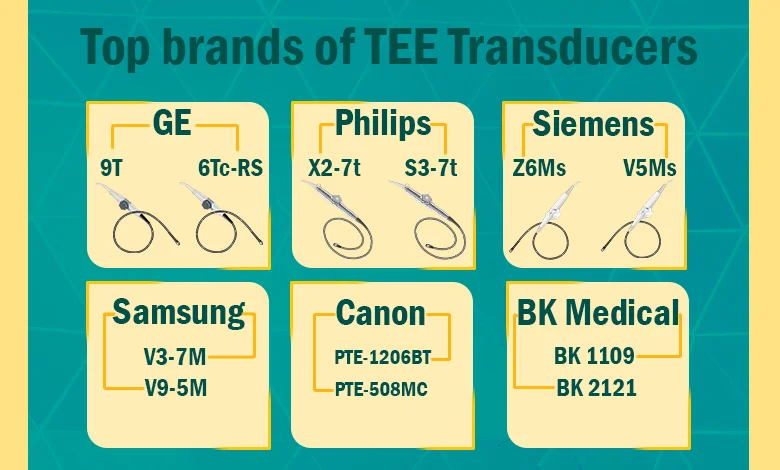
Maintaining and Extending TEE Probes’ Lifespan
Given their critical role in diagnostics, TEE probes represent a significant investment for healthcare facilities. Over time, however, wear and technical issues are inevitable, and replacing probes with brand-new equipment is not always the most practical or affordable solution. To address this, many institutions turn to refurbished probes and professional probe repair services. These options are cost-effective and sustainable alternatives, while ensuring continued reliability in clinical practice.
At Elzhen, you can find both refurbished probes and repair services available for all types of probes, including TEEs, supporting healthcare providers in maintaining high-quality imaging without unnecessary costs.
Final Thoughts on TEE Probes
Transesophageal echocardiography (TEE) probes are considered an invasive method. They provide detailed, real-time images of the heart by being placed in the esophagus. Compared to non-invasive methods such as transthoracic echocardiography (TTE), TEE gives a much clearer view of heart structures. Because of this, they are vital in diagnosing conditions such as endocarditis, atrial fibrillation, and aortic dissections. They are also widely used during surgeries, where real-time imaging is essential.
However, as with all advanced medical devices, the financial and practical aspects of maintaining these probes cannot be overlooked. Solutions such as refurbishment and repair provide healthcare institutions with viable, sustainable options for managing their equipment investments. By combining modern technology with responsible maintenance practices, such as specialized services offered by Elzhen, providers can extend the lifespan of their equipment. This ensures that TEE probes remain both effective and cost-efficient for years to come.
